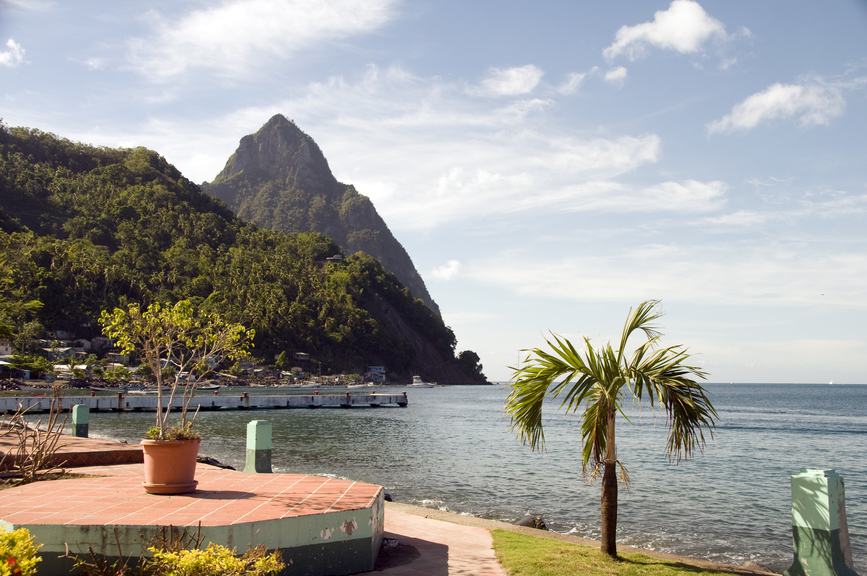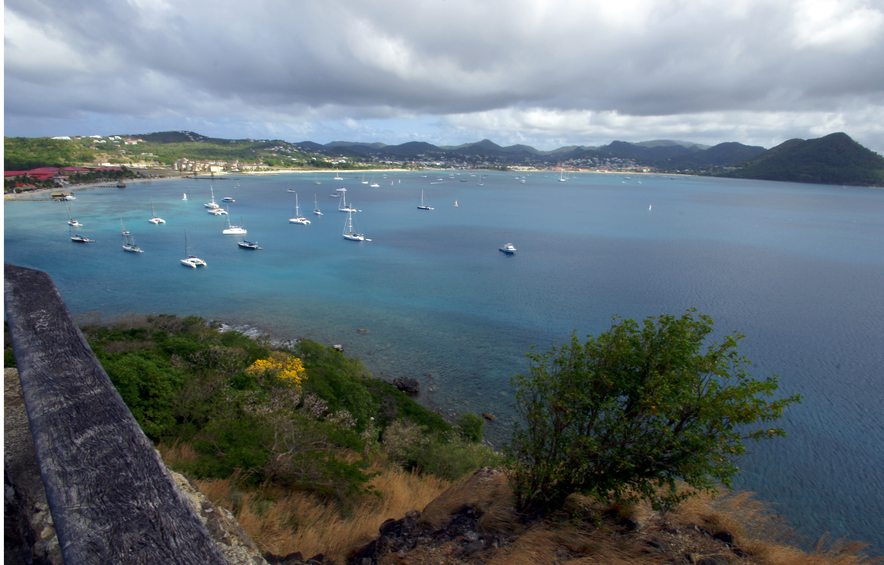Gary, K9AW will be active again from Saint Lucia Island 24 November- 7 December 2015 as J6/K9AW.
He will operate on HF Bands including activity in CQ WW DX CW Contest 28 - 29 November 2015.
QSL via home call, LOTW.
Ads for direct QSL:
GARY G DEIN, K9AW, 3040 NE 16TH AVE A110, OAKLAND PARK, FL 33334-5220, USA.
The Helen of the Caribbean
Tucked away in the Caribbean Sea is the beautiful and picturesque Island of Saint Lucia found amongst the Windward group of Islands. The island offers tourist with a mystique charm of a warm and sunny weather with golden sand colored palm fringed beaches dotting the islands landscape and wonderful foliage all around. The centre of the island is Mountainous with Mt. Gimie rising to a height of 858 meters, which is the highest point in the island. The island offers the itinerant tourist and traveler a scenic destination point to relax and enjoy the warm climes and the serenity that the island provides from the hustle and bustle of their normal day to day life.
About the Island
The Island of volcanic origin has been known by various names such as Louanalao, hewanorra and Saint Alouise. The Islands capital is Castries with a population of 70,000 covering an area of 30.5 sq. miles. It is also the place where most of the tourist resorts, hotels and restaurants in the island are located; the capital city has a small airfield, George F L Charles airport that handles regional flights from the Eastern Caribbean; the International airport is located 40 miles to the south in Vieux Fort quarter. The islands close proximity to North America brings it a number of American and Canadian tourists attracted by its warm and sunny weather. The island is also a favored destination point for Europeans especially the British and the French.
There are a number of cruise ships that pass through the capital city and docks at Pointe Seraphine which also boasts of duty free shopping centre.

History
Much of the islands early history is shrouded in Mystery and folklore. The first European settlers of the island where the French, who signed a treaty with the native Indians in 1660. England took control of the island in 1663, since than the island changed hands 14 times between the French and the English, until 1814 when England took complete control of the island. As a sequel to this fact of history the island is also known by the acronym ‘the Helen of the West Indies’. From 1958 – 1962 the island was a member of the ‘Federation of the West Indies’ and on 22nd February 1979 it became an independent state of the commonwealth of Nations
Economy
The island nation has a well educated work force and good infrastructure and port facilities that have attracted it as a place for investment in tourism and petroleum storage and transshipment. The major exports from the country are bananas 22%, petroleum products 33% - except crude oil, Aerials and aerial reflectors 11%, Beer 8.8%. The island has been able to bring in foreign business and investment into its offshore banking and tourism industries which are its main source of revenue. The currency used in the country is the EC$ (East Carribean $)

The Geography of the island
The island covers a land area of 617 km and has a population of 174,000 (2010 census). Located in the eastern Caribbean, it is located North/ North east of Saint Vincent, northwest of Barbados and south of Martinique Island. The capital city Castries is the largest city in the island, and the other major cities are Gros islet, Soufriere, and Vieux fort.
Located in the windward group of islands in the Caribbean, the island has a volcanic origin, with the interior of the islands containing Tropical/Rain forests as well as serviced by a number of small stream that flow from the middle highlands such as the Fond, Dennery, Doree rivers, Piaye, to name some. Its Rain Forests present some highly spectacular views and the most soothing and relaxing moments for any person, offering them an enchanting and quiet holiday moment.

Demography
The majority of the people live in the capital city of Castries, and the population of the island is basically is African and mixed African-European descent, and has a minority Indo-Carribean group constituting 3% of the total population, other groups account for a meager 2% of the population. The official language in the island is English; the Saint Lucian Creole French is spoken by almost 95% of the population. The population is basically Christians , with 70% of the population being Roman Catholic.
Places of Interest
When in Castries places of interest one can visit are:
- The Government House.
- The Cathedral of the Immaculate Conception that accommodates 2000 people at a time.
- The Derek Walcott Square named after the Nobel Prize winning Poet.
- The Choc Beach, Malabar Beach, La Toc and Vigie Beach.
- Windjammer, Sandals and Sugar Beach resorts that is highly popular.
- The 840 foot Morne Fortune Hill were Fort Charlotte is located and from where one can have an breathtaking view of the entire capital city.
- The Sulphur Springs, a drive-in volcano which is the only one of its kind in the world.
- The Pittons, which are two volcanic mountains rising up to a height of 700 meters.
- The St. Lucia Botanical Gardens which is a must see.
Cultural life
Saint Lucia culture is basically influenced by the African, East Indian, English and French heritage. The island is well known for its Music and Carnivals that play a major role in the life’s of the people in the island. Most St. Lucians are laid back people who undertake their day to day activities at a rhythm of their choosing; their love for music is phenomenal and they love to hear Jazz, Soca and similar such music. The Saint Lucia Carnival which is held annually in the island is a very big draw where people from far and wide visit the island to take part in the pomp and pageantry. The vibrant colors, the music and the sense of fun give the carnival that endearing visitor’s approval. The saint Lucia Jazz festival is the biggest festival held in the island and draws visitors and musicians from all parts of the world.
The climatic Conditions prevailing in the island
The climate in the island is Tropical, and has the north east trade winds that moderate its climate. The dry season is from December – May and the wet season starts from June – November.
Video Saint Lucia

